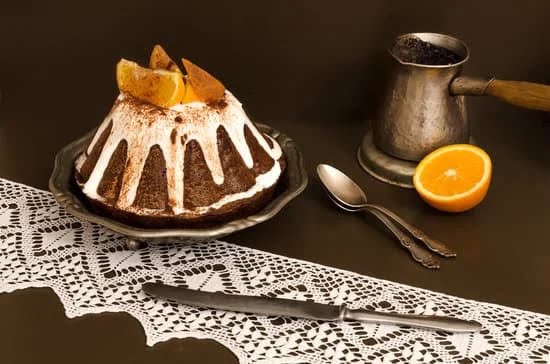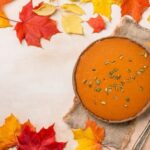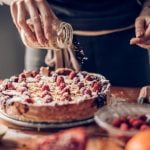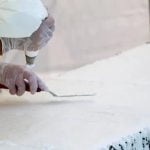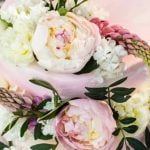Are you looking to learn how to decorate homemade cake like a pro? Whether you’re a beginner or an experienced baker, decorating your own cakes can be a fun and rewarding experience. In this article, we’ll explore the essential tools and techniques for creating beautifully decorated homemade cakes that are sure to impress your family and friends.
Homemade cake decorating is not only a great way to personalize your baked goods but also allows you to unleash your creativity by adding personalized touches. From choosing the right frosting and icing to mastering basic and advanced decorating techniques, we’ll cover everything you need to know to elevate your cake decorating skills.
In addition to providing tips on preparing the cake for decorating, selecting the perfect materials, troubleshooting common issues, and adding creative touches, we’ll also share some final tips for successful homemade cake decorating. Whether you’re baking for a special occasion or just for fun, our comprehensive guide will help you take your homemade cake decorating game to the next level.
Essential Tools and Ingredients for Cake Decorating
Decorating a homemade cake can be a fun and creative process, but having the right tools and ingredients is essential for achieving professional-looking results. Whether you are a beginner or an experienced baker, it is important to stock up on the essential items to ensure that your cake decorating ventures are successful.
When it comes to tools, some of the basic essentials include a turntable for easy icing application, offset spatulas for smooth frosting, piping bags and tips for intricate designs, and a bench scraper for creating clean edges. Other handy tools to have in your arsenal are a cake leveler for even layers, a cake lifter for transferring finished cakes, and a pastry brush for applying syrups or glazes.
In addition to tools, having a well-stocked pantry of ingredients is crucial for successful cake decorating. Some key ingredients to have on hand include high-quality butter and cream cheese for rich and creamy frostings, pure vanilla extract for flavoring, and gel food coloring for vibrant hues. It’s also important to have different types of flour and sugar on hand if you plan on experimenting with various cake recipes.
As you become more experienced in cake decorating, you may find yourself expanding your collection of tools and ingredients to include specialty items such as edible glitter, edible pearls, and edible luster dust. These decorative elements can add an extra touch of elegance and sophistication to your homemade creations. By having these essential tools and ingredients at your disposal, you will be well-equipped to tackle any cake decorating project with confidence.
Preparing the Cake for Decorating
When it comes to decorating a homemade cake, the first step is to prepare the cake for decorating. This involves ensuring that the cake is baked and cooled properly before any decorations are added. To do this, make sure to level the top of the cake using a serrated knife, creating an even surface for decorating. Additionally, brushing off any loose crumbs from the cake will ensure a smooth and clean canvas for your decorations.
An important tip for preparing your homemade cake for decorating is to consider the type of frosting or icing you will be using. Different types of frosting require different techniques for applying and smoothing, so it’s essential to plan ahead and choose the right type of frosting for your design. Whether it’s buttercream, cream cheese frosting, or ganache, each type has its own unique texture and flavor, so be sure to select one that complements your cake.
To add an extra touch of flavor and moisture to your homemade cake before decorating, consider using simple syrup. A mixture of sugar and water that has been heated until the sugar dissolves can be brushed onto each layer of the cake before adding the frosting. This not only adds moisture but also enhances the overall flavor of the cake.
| Homemade Cake Preparation | Tips and Tricks |
|---|---|
| Leveling the cake | Ensure an even surface for decorating |
| Choosing the right frosting | Selecting a type that complements your design |
| Using simple syrup | Enhance moisture and flavor before adding frosting |
Choosing the Right Frosting and Icing for Your Homemade Cake
When it comes to decorating a homemade cake, choosing the right frosting and icing is key to achieving the desired look and taste. Whether you prefer a classic buttercream or a smooth fondant, understanding the different options available can help elevate your cake decorating game. Here are some essential frosting and icing options to consider for your next homemade cake:
1. Buttercream: Buttercream is a popular choice for homemade cakes due to its versatility and creamy texture. Made with butter, powdered sugar, and flavorings, buttercream can be easily flavored and colored to suit any theme or occasion. It can be used for piping borders, flowers, and other decorations.
2. Fondant: Fondant is a smooth, pliable icing that provides a polished look to cakes. It can be rolled out and draped over the cake for a clean canvas for intricate designs. Fondant is often used for sculpting 3D figures, covering wedding cakes, or creating detailed patterns.
3. Royal Icing: Royal icing is made from egg whites and powdered sugar, giving it a hard, glossy finish once dried. This makes it ideal for intricate detailing such as lacework or delicate piped designs. Royal icing can also be used for creating edible decorations like flowers or monograms.
4. Ganache: Ganache is a rich mixture of chocolate and cream that creates a velvety-smooth finish on cakes. It can be poured over the cake for a decadent glaze or whipped into a fluffy consistency for frosting layers. Ganache is perfect for achieving a sleek, professional look on homemade cakes.
By understanding these different frosting and icing options, you will have the knowledge needed to select the best one that aligns with your vision for decorating your homemade cake. Experimenting with various textures and flavors can also add an extra layer of creativity to your cake decorating process.
Basic Cake Decorating Techniques for Beginners
Decorating a homemade cake can seem like a daunting task, especially for those who are new to baking and cake decorating. However, with the right techniques and some practice, anyone can learn how to create beautiful and impressive cake designs. In this section, we will cover some basic cake decorating techniques that are perfect for beginners, helping you to take your homemade cakes to the next level.
Piping Techniques
One of the most essential skills for any cake decorator is learning how to use piping techniques to apply frosting or icing onto a cake. There are various types of piping tips that can be used to create different designs, such as rosettes, stars, shells, and more. With a little practice and patience, you can master these simple yet effective techniques that will add a professional touch to your homemade cakes.
Using Edible Decorations
Another easy way to decorate a homemade cake is by using edible decorations such as sprinkles, edible glitter, chocolate shavings, or even fresh fruit. These decorations can add color, texture, and flavor to your cakes without requiring any special skills or equipment. Simply sprinkle or place the decorations on top of your frosted cake for an eye-catching finish.
Writing and Lettering
If you want to personalize your homemade cake for a special occasion or celebration, learning how to write or pipe lettering onto your cake is a valuable skill. Whether it’s writing “Happy Birthday” or adding someone’s name or age in frosting, practicing writing with icing can make your cakes truly one-of-a-kind. Consider investing in letter stencils or practice freehand writing on parchment paper before transferring it onto the cake surface.
By mastering these basic cake decorating techniques as a beginner baker, you’ll gain confidence in creating visually appealing homemade cakes that will impress your friends and family. Keep practicing and experimenting with different designs and ideas to find what works best for you when decorating your own delicious creations.
Advanced Cake Decorating Techniques for the More Experienced Bakers
For those who have some experience in cake decorating and are looking to take their skills to the next level, there are a variety of advanced techniques that can be used to create stunning and professional-looking homemade cakes. One such technique is known as piping, which involves using a pastry bag and various tips to create intricate designs, borders, and lettering on cakes. This can include techniques such as rosettes, shells, basketweave, and more.
Another advanced technique for cake decorating is working with fondant. Fondant is a pliable icing that can be rolled out and draped over a cake for a smooth and flawless finish. It can also be used to create 3D decorations, sculpted figures, and elaborate designs that are sure to impress guests. Although working with fondant may require some practice and patience, the results can be truly extraordinary.
In addition to piping and fondant work, advanced bakers may also want to explore techniques such as marbling, stenciling, airbrushing, and using edible flowers or other natural elements for decoration. These techniques can add texture, dimension, and elegance to homemade cakes, making them suitable for special occasions such as weddings, birthdays, or other celebrations.
By incorporating these advanced techniques into their cake decorating repertoire, experienced bakers can elevate their skills to new heights and create showstopping desserts that are both delicious and visually stunning.
How to Use Fondant, Gum Paste, and Other Specialty Cake Decorating Materials
When it comes to taking your homemade cake decorating to the next level, using specialty materials such as fondant and gum paste can truly elevate the overall look and design of your creation. These materials offer a unique opportunity to sculpt, shape, and create intricate designs that may be more difficult to achieve with traditional frosting or icing.
Working With Fondant
Fondant is a pliable sugar dough that can be rolled out and draped over cakes for a smooth, clean finish. To use fondant on your homemade cake, start by rolling it out on a clean surface dusted with powdered sugar. Gently lift the rolled fondant over the cake and smooth it out using a fondant smoother or your hands. Trim off any excess fondant around the edges for a polished look.
Exploring Gum Paste
Gum paste is another versatile material that can be molded into intricate shapes and designs. It dries quickly and hardens, making it ideal for crafting decorations such as flowers, bows, or figurines to adorn your homemade cake. To work with gum paste, knead it until it is pliable, then use shaping tools to create the desired shapes before allowing them to dry and set.
Using Specialty Decorating Materials
In addition to fondant and gum paste, there are various other specialty cake decorating materials you can experiment with to add unique elements to your homemade cake. Edible glitter, metallic paints, edible pearls or beads, and edible printing sheets are just some of the options available for adding personalized touches to your creations.
By incorporating these specialty materials into your homemade cake decorating repertoire, you can expand your creative possibilities and wow your friends and family with beautifully designed confections. Experimenting with fondant, gum paste, and other specialty decorating materials will allow you to take your skills as a baker and decorator to new heights. Try different techniques and don’t be afraid to get creative – after all, part of the joy of making homemade cakes is in the fun of experimenting.
Tips for Adding Personalized and Creative Touches to Your Homemade Cake
Now that you’ve mastered the essential tools, ingredients, and basic decorating techniques for your homemade cake, it’s time to add your personal touch and get creative with your design. Whether it’s for a birthday, anniversary, or any special occasion, these tips will help you take your cake decorating skills to the next level.
1. Custom Cake Toppers: Adding a unique cake topper can instantly elevate the look of your homemade cake. Consider using personalized figurines, monogrammed initials, or thematic decorations that reflect the theme of the celebration.
2. Edible Art: Get inspired by nature, art, or even fashion and create edible masterpieces on your homemade cake. Use food coloring to paint beautiful designs or images directly onto the frosting. You can also experiment with different piping tips and techniques to create intricate patterns and textures.
3. Fresh Floral Arrangements: Elevate the visual appeal of your homemade cake by incorporating fresh flowers as part of the decoration. Ensure that the flowers are pesticide-free and safe for consumption by placing a barrier between them and the cake, such as using a flower pick or wrap each stem in floral tape before inserting it into the cake.
By following these tips for adding personalized and creative touches to your homemade cake, you can make every celebration memorable with a beautifully decorated dessert that not only tastes delicious but looks stunning as well. Embrace your creativity and let your imagination run wild when it comes to decorating your next homemade masterpiece.
Troubleshooting Common Cake Decorating Issues
When it comes to decorating homemade cakes, there are common issues that often arise, such as cracking and smudging. However, with the right tips and tricks, these problems can be easily avoided or remedied. One common issue is cracking in the frosting or icing of the cake.
This can be caused by a few factors, including not allowing the cake layers to cool completely before frosting, or using too much or too little moisture in the frosting. To prevent cracking, ensure that your cake layers are fully cooled before applying any frosting or icing, and follow your recipe’s instructions carefully regarding the moisture content of your frosting.
Another common issue is smudging or smearing of decorations on the cake. This can happen when using certain types of decorations that are too delicate or moist for the type of frosting used. To avoid this problem, consider using firmer decorations such as chocolate shards or edible pearls, and make sure that your frosting has set properly before adding any delicate decorations.
Additionally, air bubbles in fondant can cause an uneven appearance on the surface of the cake. To prevent this issue, knead the fondant thoroughly before rolling it out onto the cake and use a smoothing tool to gently press out any air bubbles once it is applied to the cake.
By following these troubleshooting tips, you can ensure that your homemade cake decorating experience is as smooth and successful as possible.
| Troubleshooting Tip | Description |
|---|---|
| Preventing Cracking | Ensure cake layers are fully cooled before applying frosting and follow recipe instructions for moisture content. |
| Avoiding Smudging | Use firmer decorations and allow frosting to set properly before adding delicate decorations. |
| Eliminating Air Bubbles in Fondant | Knead fondant thoroughly and use a smoothing tool to press out any air bubbles once applied to the cake. |
Conclusion and Final Tips for Successful Homemade Cake Decorating
In conclusion, homemade cake decorating can be a fun and rewarding activity for bakers of all skill levels. Whether you are just starting out or have been decorating cakes for years, there is always something new to learn and explore in the world of cake decorating. By following the essential tools, ingredients, and techniques outlined in this article, you can create stunning and delicious homemade cakes that will impress your friends and family.
One key takeaway from this article is the importance of choosing the right frosting and icing for your homemade cake. Different types of frosting and icing have varying textures, flavors, and uses, so it’s essential to select the best option for your specific cake. Additionally, learning how to use fondant, gum paste, and other specialty cake decorating materials can open up a whole new realm of possibilities for creativity in your cake designs.
Finally, when adding personalized touches to your homemade cake, don’t be afraid to get creative. Whether it’s incorporating fresh flowers, edible images, or elaborate piping designs, adding a personal touch to your cake can make it truly unique and memorable.
With practice and patience, you can master the art of homemade cake decorating and delight everyone with your beautifully decorated creations. So go ahead and experiment with different techniques on how to decorate homemade cake – after all, the possibilities are endless.
Frequently Asked Questions
How Do You Make a Simple Cake Look Fancy?
A simple cake can be made to look fancy by adding some decorative elements like fresh flowers, berries, or edible gold leaf. You can also use a stencil to dust powdered sugar or cocoa onto the cake for a professional-looking design.
How Do You Make a Homemade Cake Look Professional?
To make a homemade cake look professional, it’s important to ensure even layers and smooth frosting. Using a turntable while frosting can help achieve a smoother finish. Adding decorative piping or fondant accents can also elevate the appearance of the cake.
What Can I Use to Decorate a Cake?
There are countless options to decorate a cake including buttercream frosting, fondant, edible flowers, chocolate shavings, sprinkles, dragees, and even colorful fruit slices. Edible glitter and food coloring can also be used to create unique designs and decorations on cakes.

Welcome to our cake decorating blog! My name is Destiny Flores, and I am the proud owner of a cake decorating business named Cake Karma. Our mission is to provide delicious, beautiful cakes for all occasions. We specialize in creating custom cakes that are tailored specifically to each customer’s individual needs and tastes.

